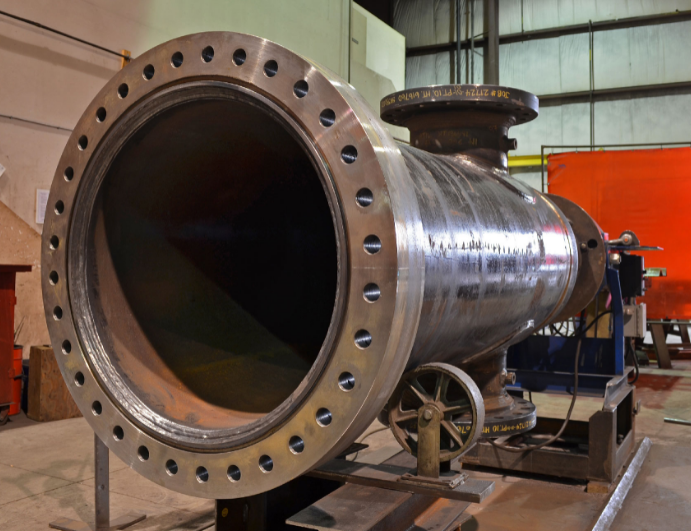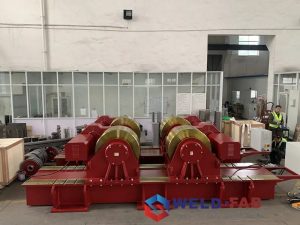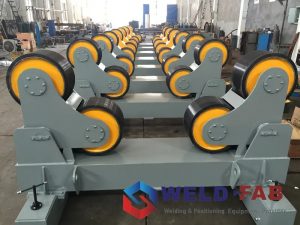The Welding Rotator Used In Heat Exchanger
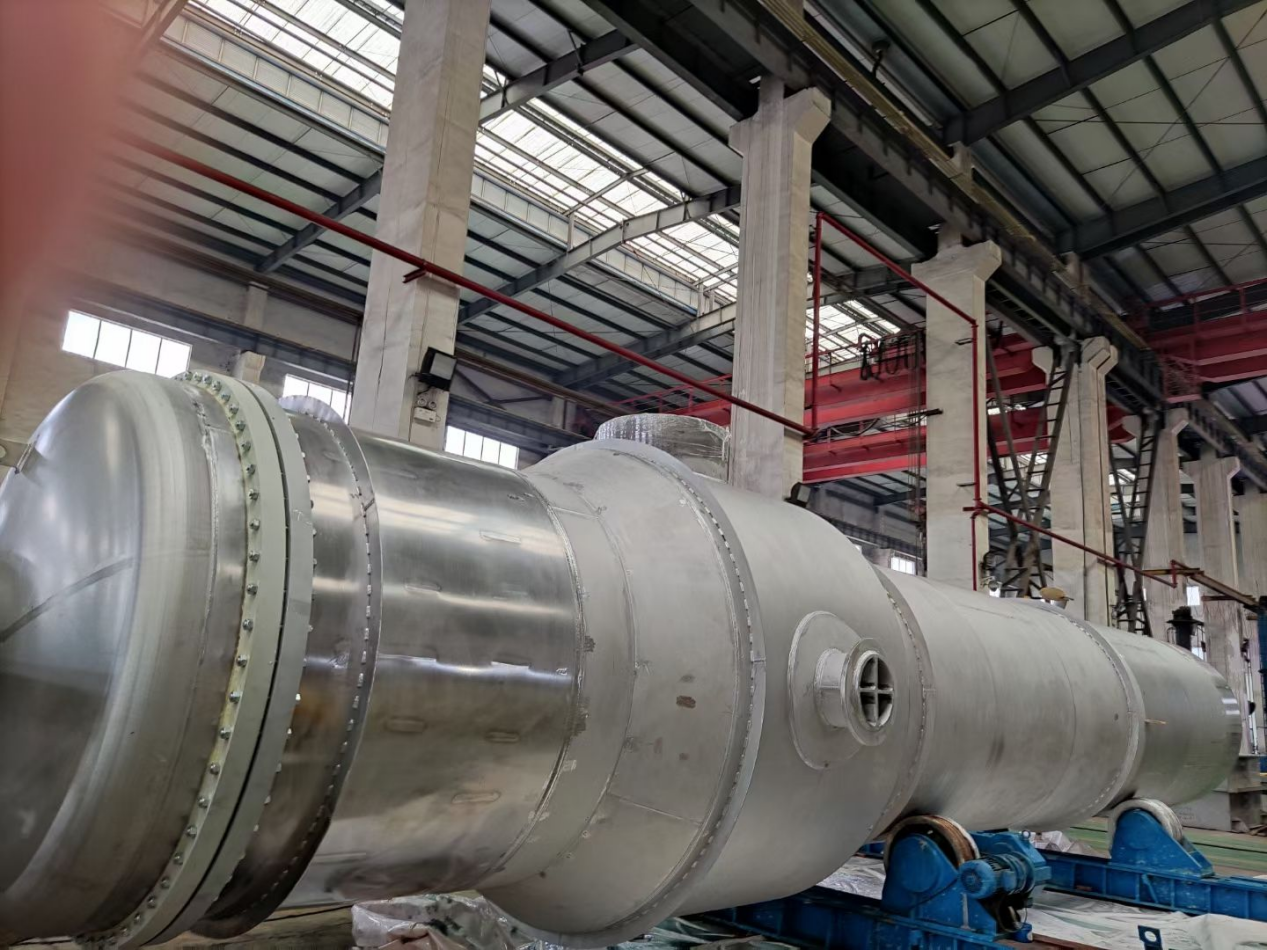
The heat exchanger is a device that transfers part of the heat of the hot fluid to the cold fluid, also known as the heat exchanger. Heat exchangers are general-purpose equipment in many industrial sectors, such as chemical, petroleum, electric power, and food, and occupy an important position in production. In chemical production, heat exchangers can be used as heaters, coolers, condensers, evaporators and reboilers, etc., and are relatively widely used. There are many types of heat exchangers, but according to the heat exchange principles and methods of hot and cold fluids, they can basically be divided into three categories: partition type, hybrid type and heat storage type. Among the three types of heat exchangers, the dividing wall heat exchanger is the most widely used. According to the structure material, it can be divided into metal material heat exchanger and non-metal material heat exchanger. According to the shape and structure of the heat transfer surface, it can be divided into tube heat exchanger and plate heat exchanger. According to the purpose, it can be divided into collective heating heat exchangers and household heat exchangers.
Shell and tube (also known as tube and tube) heat exchanger is one of the most popular types of high pressure heat exchangers. Due to its flexible design and various changes, it can provide various pressures and temperatures. The shell-and-tube heat exchanger is mainly composed of shell, tube bundle, tube sheet and head, etc. The shell is mostly circular, with parallel tube bundles or spiral tubes inside, and both ends of the tube bundle are fixed on the tube sheet. Specifically, when using materials such as nickel, nickel-chromium alloys and stainless steel to produce high-pressure heat exchangers with surfacing welding, excellent welding quality is required.
The double tube heat exchanger is one of the simplest solutions to achieve heat transfer under high pressure. Their simple design, which connects a series of straight pipes to detachable elbows, also makes them easy to clean and maintain. Double tube heat exchangers are commonly used as liquid-liquid heat exchangers, and their advantage is that they can operate in a true countercurrent mode.
The high-pressure circulating gas cooler is produced for the autoclave processing and production of ethylene vinyl acetate (EVA) copolymers. It requires complete mechanical analysis, detailed design, finite element analysis and fatigue analysis. This kind of heat exchanger also requires stainless steel surfacing.
High-pressure U-tube bundle heat exchangers are usually a cost-effective design for detachable tube bundle heat exchangers. In addition, the U-shaped design compensates for the different thermal expansion between the shell and the inner tube during different cycles of a process, and can avoid the need for expansion joints.

Generally, the heat exchanger is made of metallic materials. Among them, carbon steel and low-alloy steel are mostly used in the manufacture of low- and medium-pressure heat exchangers. Austenitic stainless steel can be used as high temperature and low temperature resistant materials in addition to being mainly used for different corrosion resistance conditions. And stainless steel has very good antioxidant properties, safety and sanitation, and is widely used in food, medicine, heating, domestic water, air conditioning backwater and other fields. According to the data from the Heat Exchange Equipment Promotion Center, the stainless steel heat exchanger has a better heat transfer effect than the traditional carbon steel heat exchanger, and has a longer service life. Stainless steel heat exchangers have been widely used in many fields at present, and the heat exchangers are made of food-grade stainless steel, which has outstanding anti-rust and anti-scaling properties.
Heat exchangers have many advantages, such as reducing maintenance costs, improving performance, and saving time and energy. However, there are also some disadvantages.
Corrosion is the most prominent problem in heat exchangers, and it is difficult to avoid due to working conditions. But it’s not need to worry too much. Corrosion-related system operation problems can be minimized. This can be solved by using corrosion-resistant walls and pipes.
There will be some internal accumulation of liquid residues. The residue can be removed in time to avoid corrosion after accumulation.
Therefore, the materials used to build the heat exchanger must be high-quality and durable because the process involves high levels of pressure and stress. The corrosion behavior of metals is different under the conditions of heat transfer and no heat transfer. Generally speaking, heat transfer will aggravate the corrosion of metals, especially under conditions of boiling, vaporization or overheating. In different media, or on different metals, the effect of heat transfer is different.
Knowing the causes of various corrosion of heat exchangers, and choosing anti-corrosion measures reasonably, can we achieve the purpose of efficient use of equipment. In view of the above related corrosion conditions, the following anti-corrosion methods are available: corrosion inhibitors and electrochemical protection.
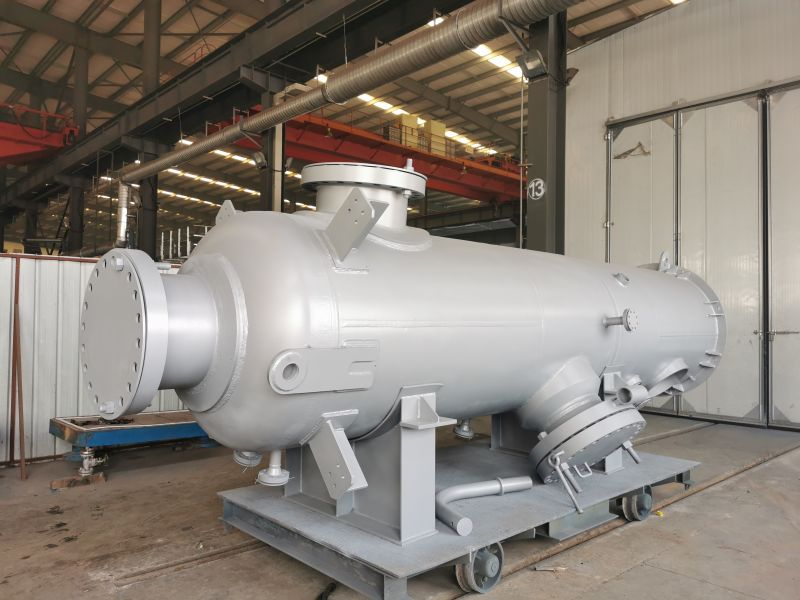
The heat exchanger industry involves nearly 30 industries such as HVAC, pressure vessels, reclaimed water treatment equipment, chemicals, and petroleum, forming an industrial chain with each other. Among them, the petrochemical industry is still the largest market for the heat exchanger industry. In addition, a large number of professional heat exchangers are needed in aerospace vehicles, semiconductor devices, nuclear islands, wind turbines, solar photovoltaic power generation, and polysilicon production.
In the initial stage of production of heat exchangers, the materials and grades of heat exchange equipment must be selected, and the chemical composition of the materials must be inspected. After the mechanical properties are qualified, the steel plate is corrected. The methods include manual correction, mechanical correction and flame correction. After that, a series of production arrangements: material preparation–marking–cutting–edge processing (flaw detection)–forming–assembly–welding–welding quality inspection-assembly welding–pressure test quality inspection. Chemical equipment not only needs to inspect raw materials before manufacturing, but also needs to be inspected at any time during the manufacturing process.
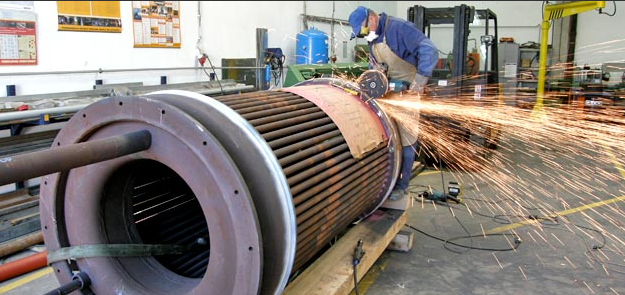
It can be seen that a lot of welding work will be required in the production process of the exchanger.
As there are quite strict technical requirements for the welding process of the heat exchanger, the construction process must also be manufactured in strict accordance with the equipment construction drawings. The steel plate material used to roll the heat exchanger cylinder must have a uniform texture and a uniform width. If the width is inconsistent, both ends must be polished to be consistent after coiling, so as not to affect the welding quality. In the auxiliary welding process, the welding rotator can play a very good role in supporting and rotating the cylinder. The polyurethane rollers of the welding rotator can increase the friction between the cylinders, prevent the cylinders from slipping, and can also protect the surface of the cylinders from scratches. Moreover, polyurethane also has the characteristics of abrasion resistance and high temperature resistance. The welding rotator drives the cylinder to rotate steadily, enabling the welder to perform welding work better, reducing manpower and improving production efficiency. In addition to the application in the welding process, the welding rotator can also assist the production process of sandblasting and painting.